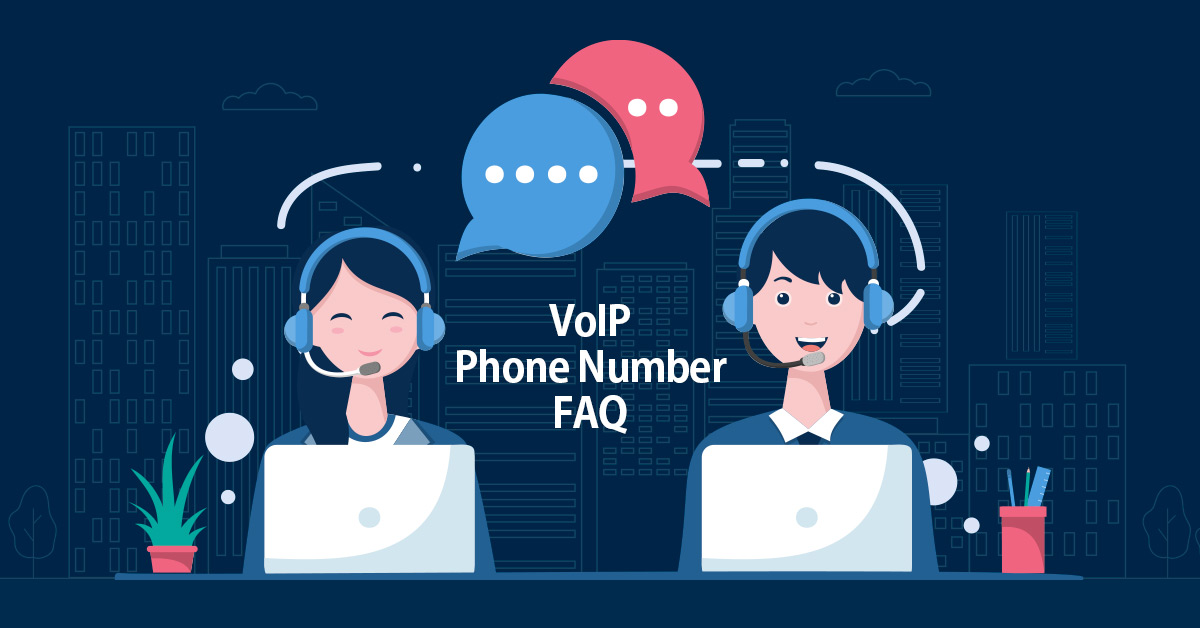It’s simple to overlook verifying your voicemail box when you miss a call. Regardless of how portable your business phone system is, you’re not likely to use it all the time during the workday (or even in your lifetime). However, that doesn’t mean you can’t continue to monitor your voicemails and the requirements of your callers. You may increase the dependability and output of your team by using voicemails to email with a VoIP phone service.
We’ll go into detail on voicemail to email, including what it is, how it functions, and how it can help your company. We’ll also go over how to use Business Phone Services to start sending voicemails to emails.
Understanding the Challenge of Missed Leads
Missed leads are lost chances for companies to interact with prospective clients, learn about their needs, and eventually turn them into paying customers. These Missed leads, whether from high call volumes, a lack of support staff, or simple human error, can significantly negatively impact a company’s profitability and business growth strategies.
Missed leads frequently happen when clients call a business after hours or during busy periods when support employees aren’t available to take calls. In these situations, callers might leave voicemails outlining their questions. But without a proactive follow-up system, these leads might go unreported or ignored, costing company’s potential business.
How Does Voicemail to Email Work?
Voicemail to email converts voicemail messages into text or audio files and sends them to the recipient’s email inbox. When a caller leaves a voicemail, the voicemail system converts the message into text using speech recognition technology.
This text is sent as an email attachment and any accompanying audio file to the recipient’s designated email address. Users can access voicemail messages directly from their email inbox, making it simple to review, prioritize, and respond to messages at their convenience whether they are on a computer or a mobile device.
What is the Difference between Voicemail and Voice-Mail?
The difference between “voicemail” and “voice-mail” is their spelling conventions. “Voicemail” is a compound word formed by combining “voice” and “mail,” commonly used to refer to a system that records and stores voice messages left by callers when the recipient is unavailable.
On the other hand, “voice mail” is a two-word phrase where “voice” acts as an adjective modifying “mail,” indicating any form of mail communicated verbally, which could include voicemail as well as other types of voice-based messaging systems. Both terms refer to the same concept but vary in spelling conventions.
The Solution: Voicemail to Email Transcription Technology
Voicemail-to-email transcription technology automatically converts voicemail messages into text and sends them straight to the intended recipient’s email inbox. They are providing a workable solution to the problem of missed leads. This makes it possible for companies to quickly listen to voicemails and reply, guaranteeing that no lead is missed or unattended.
Efficiency
Voicemail to Email Transcription Technology reduces the need to listen to drawn-out recordings by turning voicemail messages into written text, thereby streamlining communication.
Accessibility
Voicemail-to-email transcription services are incredibly accessible. Because they let users receive transcriptions straight in their inbox from any internet-connected device, including computers, tablets, and smartphones. Ensuring that important messages are never overlooked improves communication effectiveness.
Prompt Follow-Up
Businesses can follow up with potential leads much more quickly when they use transcribed voicemails sent straight to their email. This expedites the review process so that questions that need to be addressed right away can be quickly identified and given priority.
Organization
The email system makes it simple to archive, classify, and prioritize voicemail transcriptions, which promotes effective lead management and follow-up procedures.
Integration
The management of lead interactions is greatly improved by integrating voicemail to email transcription with many other business apps. The smooth connectivity allows all interactions with potential leads to be automatically tracked and logged.
Enhanced Customer Experience
Answering voicemails promptly shows that you are aware of and responsive to your customers, which raises their level of satisfaction and builds goodwill.
Key Benefits of Voice-to-Email Transcription
There are several important advantages to voice mail to email transcription that improve individual and organizational productivity. To facilitate rapid message content scanning without requiring you to listen to lengthy audio files. It first converts voice messages into text format and sends them to your email.
It is beneficial in noisy settings or other circumstances where audio playback is impossible. Second, making message archiving, searching, and referencing simpler facilitates communication and enhances organizational skills.
Furthermore, it expedites response times by enabling recipients to ascertain the urgency of messages and establish appropriate priorities promptly. Lastly, this technology ensures that important information is not missed and enhances accessibility for individuals with hearing loss. Let’s look at a few of the main benefits of voicemail-to-email transcription.
Real-Time Lead Notification
Businesses can benefit from voicemail-to-email transcription technology by getting instant notifications whenever a lead leaves a message. This real-time notification feature ensures that companies are aware of new leads as soon as possible, enabling quick follow-up and interaction.
Through the conversion of voicemails to email and direct delivery to the recipient’s inbox. Businesses can take advantage of timely communication opportunities with prospective customers. By utilizing Voicemail to Email Transcription, recipients can effortlessly access and review voicemail messages as they will deliver directly to their email inbox.
Accessibility and Convenience
Email is a widely available communication channel, allowing users to access messages from any internet-connected device. Recipients can easily access and review voicemail messages by having them delivered directly to their email inbox through Voicemail to Email Transcription.
Voicemails are simple to access and reply to at any time, regardless of workplace, home, or mobile location. Because of its accessibility, users can manage lead communications with greater flexibility as they are no longer restricted to a particular phone or voicemail system.
Enhanced Organization and Prioritization
One advantage of transcriptions is that voicemails can be better organized and prioritized in the email inbox. Businesses can easily archive, classify, and prioritize leads based on urgency or importance by turning voicemail messages into written text.
By streamlining lead management procedures, this organizational structure enables companies to deploy resources effectively and concentrate efforts on high-priority leads. Voicemails that have been transcripted can also be easily searched, filtered, and sorted. Making it possible to retrieve and take necessary action quickly.
Integration with CRM Systems
Customer relationship management (CRM) systems can be seamlessly integrated with many voice mail to email transcription services. With the help of this integration, companies can keep an exhaustive record of lead interactions within their CRM platform, logging and tracking them automatically.
Businesses can obtain insights into lead behavior and preferences by integrating voicemail transcriptions with CRM data. This allows for targeted follow-up strategies and personalized communication. This smooth integration improves data accuracy, facilitates more efficient lead management workflows, and allows for better decision-making.
Improved Customer Experience
Following up on voicemails promptly shows that you are attentive and responsive to customer questions, improving the overall customer experience. Businesses show their dedication to customer engagement and satisfaction by using voicemail-to-email transcription technology to quickly respond to customer questions and concerns.
Ultimately, this proactive approach helps long-term customer advocacy and retention by cultivating positive relationships with customers and establishing trust and loyalty. Clients enjoy flexible interaction with businesses via email, fostering positive experiences.
How to Implement Voicemail to Email Transcription for Lead Conversion?
Using voice mail to email transcription to convert leads requires a calculated approach to improve client interaction and expedite sales strategies. Below are some suggestions for converting voice mail to email.
Choose the Right Service Provider
Choose a reliable supplier of voicemail to email transcription services. That can meet your business needs with customizable features, secure data handling, and accurate transcription.
Configure Notification Settings
Configure email notification settings to guarantee that voicemail transcriptions arrive on time and are sent to the right teams or recipients for further action.
Establish Clear Processes and Protocols
Establish uniform protocols for examining, ranking, and replying to voicemails that have been transcripted to guarantee efficiency and uniformity in lead handling.
Train Staff on Best Practices
Train and advice support staff on using voicemail to email transcription technology properly. Including how to prioritize leads, understand transcribed messages, and reply accordingly.
Monitor Performance and Feedback
Keep a close eye on essential performance indicators, like response times, conversion rates, and client comments, to assess how well your voicemail-to-email transcription plan is working and pinpoint areas that need work.
Iterate and Optimize
Maintain constant alignment between business goals and customer expectations by iteratively improving your lead management procedures based on data analysis and customer feedback insights.
Conclusion
Increasing lead conversion is crucial to promoting expansion and financial success in the current dynamic business environment. Businesses can effectively address the issue of missed leads by ensuring prompt follow-up. And engage with potential customers by utilizing voicemail-to-email transcription technology. Voice-to-email transcription helps companies boost customer satisfaction, streamline lead management, and achieve growth goals through strategic execution and optimization.




